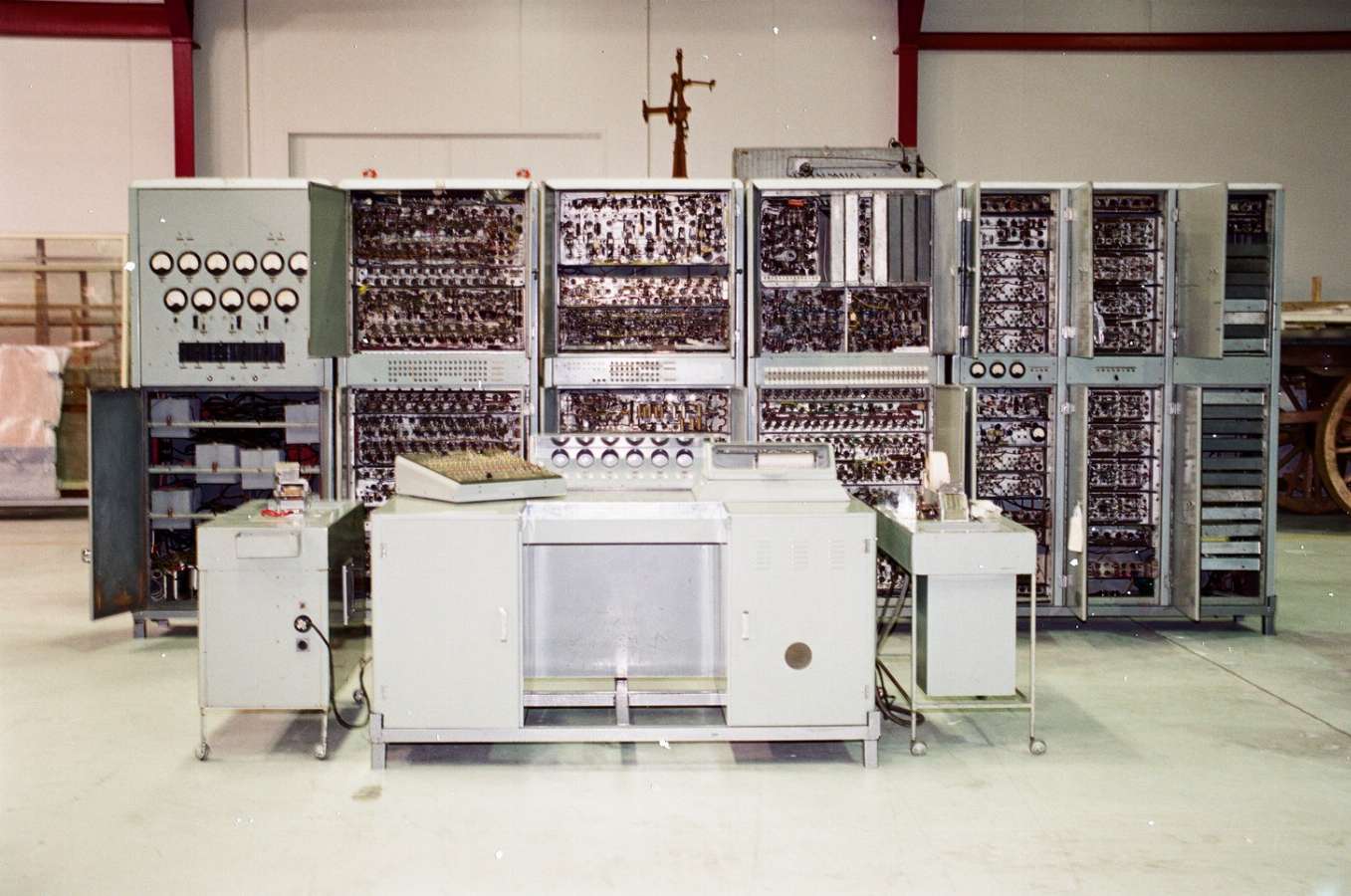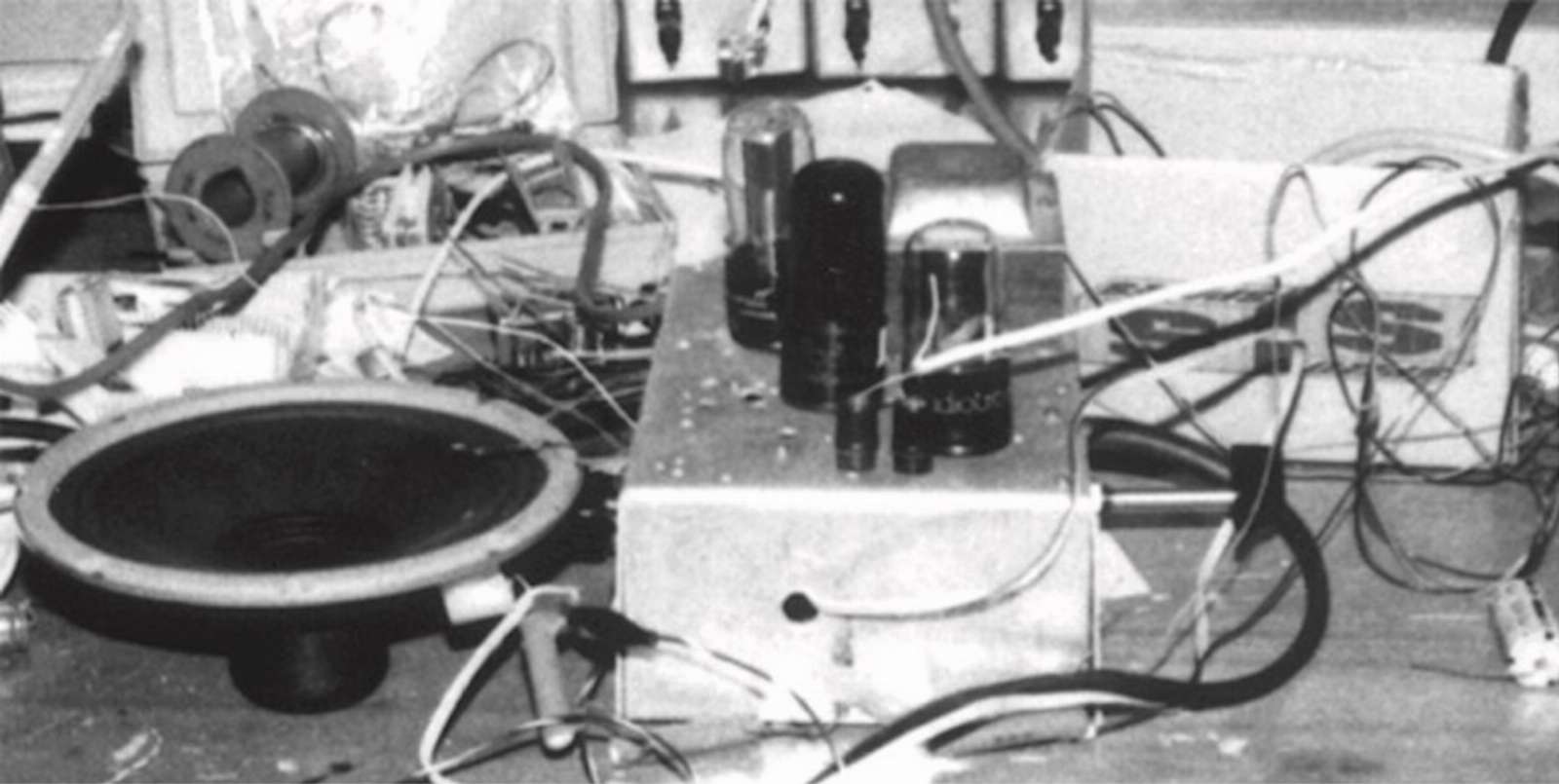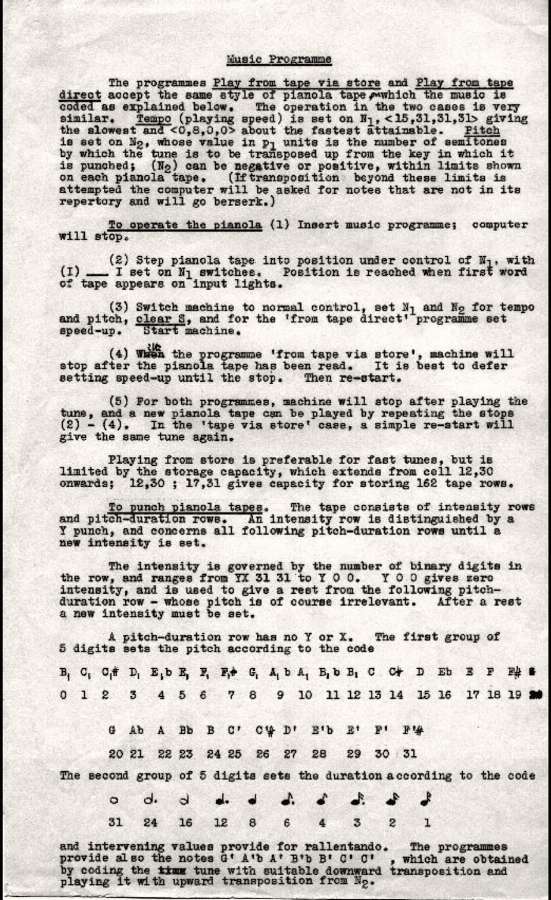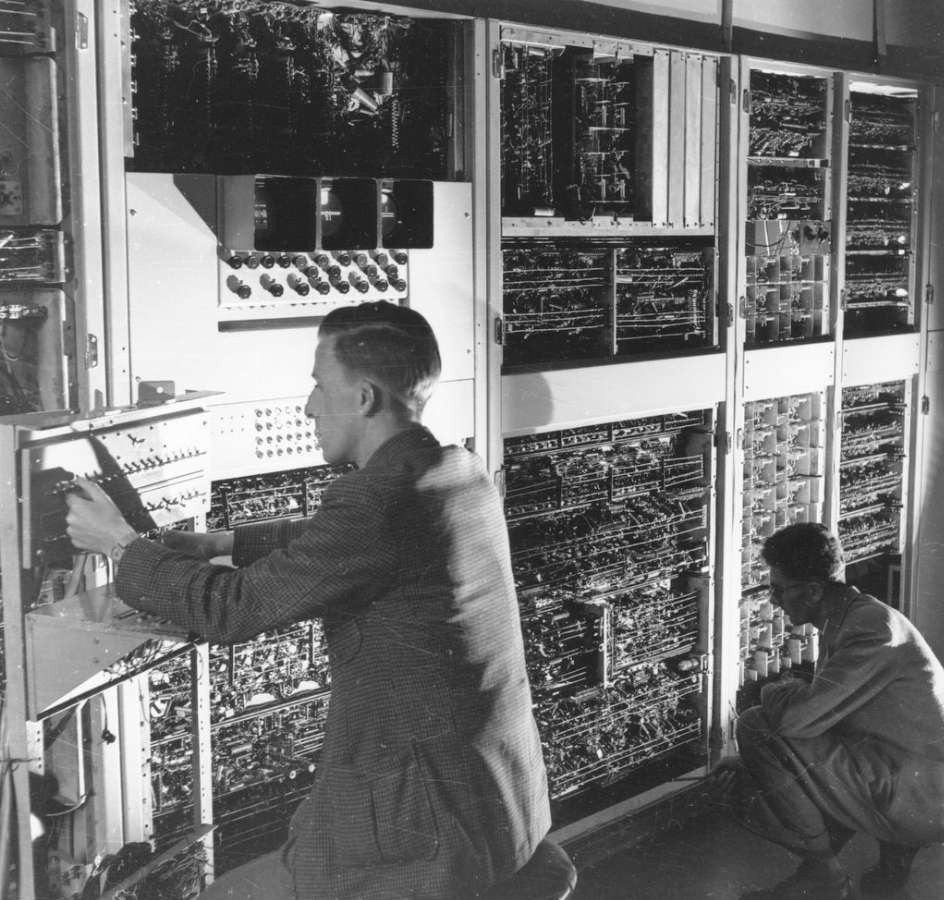How Australia played the world’s first music on a computer
We don't think twice about playing music via a computer - we have them in our pockets, and in our homes and offices, with music on tap. But playing music on a computer was once an almost unthinkable leap of the imagination and the most devilishly difficult programming challenge.
The world's fourth digital computer was designed and built in Australia by the Council for Scientific and Industrial Research (CSIR, the precursor of the CSIRO). It started life as a dream in 1947, ran its first test program in 1949 and played music in 1950 or 1951.
Initially known as the CSIR Mark 1 - later renamed CSIRAC (the CSIR Automatic Computer) - it was built at the CSIR's radiophysics division in Sydney.
CSIRAC was a very primitive computer by today's standards. It was very slow (1,000 cycles per second); it did not have very much memory (about 2KB of RAM and 3KB of disk memory); it filled a room and; it had no display like a modern computer.
Out of the hooter
Photo: CSIRAC before it was put on display at Museum Victoria
Most output from CSIRAC was via punched paper tape that was later converted to text on another machine. The only familiar output device was a speaker (called the hooter), and it was used to track the progress of a program.
Programmers would place a sound at the end of their program so they knew it had ended (this was known as a blurt), or they would program progress-indicator blurts into a program.
Despite being primitive, CSIRAC performed groundbreaking work, including running the calculations to find the centre of our galaxy in 1953, and for the engineering of our first skyscraper building.
 CSIRAC
before it was put on display at Museum VictoriaCSIRAC was a serial computer, it passed digital bits around one at a time unlike the 32 or
64 bits passed around in parallel in modern computers.
CSIRAC
before it was put on display at Museum VictoriaCSIRAC was a serial computer, it passed digital bits around one at a time unlike the 32 or
64 bits passed around in parallel in modern computers.
The memory on the CSIRAC was mercury acoustic delay lines. That means a pulse would be put into the memory tube, it would travel to the other end of the tube and be recycled back to the front. In this way, many bits and digital words could be stored in one tube of mercury. There were about 20 memory tubes functional at any time.
A consequence of using mercury acoustic delay time memory was that each memory access took a different time. This would prove problematic for any time-critical application, such as playing music in real time.
The music maker
The first software engineer or programmer was the mathematician Geoff Hill, who is something of an unsung hero of Australian computing.
Hill came from a very musical family; his mother was a music teacher, his sister a performer and he had perfect pitch. This is crucial, as the way CSIRAC created sounds was by sending raw pulses from the computer data bus to the speaker.
If casually programmed, these pulses would arrive at the speaker at somewhat random times, resulting in the blurting type of sound used by programmers to indicate points in the program's execution.
Hill would have quickly realised that if he could get the pulses to arrive at a regular time, then he would get a steady pitch. Then, perhaps he could program the notes of a musical scale.
This was an exceedingly difficult task because each memory access took a different time, and the overall clock frequency was only 1,000 cycles a second.
But Hill managed this, and his musical knowledge was invaluable, although on at least one occasion he telephoned his mother late at night and asked her if some notes were in tune while holding the telephone receiver to the computer speaker.
Her response on the first occasion was to scold Hill for playing silly buggers with a comb and a piece of paper and annoying her late and night when his dinner was in the oven! She didn't understand what was going on.
A simple tune
Hill programmed CSIRAC to play various popular tunes of the day, such as Colonel Bogey, Girl with Flaxen Hair and so on. This was natural as the programmers were not musical specialists and were not interested in what using a computer meant for the potential composition and performance of music.
The music was one of CSIRAC's parlour tricks. Dick McGee remembers it playing music when he started at the CSIRO in April 1951. At Australia's first computing conference, on August 7-9, 1951, everyone was talking about it afterwards and it caused quite a stir.
The late Trevor Pearcey led the team that created CSIRAC and he remembers its musical performances well, as recalls in the video interview from 1996, a couple of years before he died.
CSIRAC was thus the first computer in the world to play music. Sadly, none of the music it played was ever recorded.
Change of plan at CSIRO
Photo: A reconstructed valve amplifier built to the original CSIRAC design to generate the correct pulse shapes.
There was some internal refocusing within the CSIRO and it was decided to concentrate on weather science and primary production rather than computation, leaving that to others and the commercial sector.

So it is not surprising that the CSIRO resisted the music being recorded at the time. However, it has now been faithfully reconstructed and can be heard again.
A team at The University of Melbourne, led by myself, built (valve) hardware to faithfully reconstruct CSIRAC's pulse shapes, and software to be able to run the old programs.
After hand reading and entering the data from the old punched-paper program tapes, the programs were run with the reconstructed pulses and the music regenerated accurately.
The team even went to the trouble of sourcing a new speaker made within a few weeks of the original to play the music through. Museum Victoria very kindly let us put the speaker in the old cabinets to record the music being played so that it is as authentic as possible.
- CSIRAC plays a music scale(MP3, 116 KB) (0:07)
- CSIRAC plays Colonel Bogey(MP3, 270 KB) (00:17)
- CSIRAC plays The Bonnie Banks o' Loch Lomond(MP3, 289 KB) (0:18)
- CSIRAC plays Auld Lang Syne(MP3, 287 KB) (0:18)
 Photo:
CSIRAC music instructions
Photo:
CSIRAC music instructions
Shortly after CSIRAC first played music, in 1951 the BBC recorded a Ferranti Mark 1 computer playing music in Manchester, England. That is the oldest recording of a computer playing music.
When CSIRAC moved to the University of Melbourne in 1956, it continued to play music. The university's mathematics professor Tom Cherry wrote a program so that anyone could punch a "score" or "pianola" tape for the computer to play without the intricacies of knowing how to program the hooter.
Professor Cherry's instructions on how to use the music program still exist.
A lost opportunity
The most significant early developments in computer music and digital audio happened in the United States from the late 1950s at Bell Labs.
In 1957, the acoustic researcher Max Mathews had the foresight to see the potential of this technology. He wrote a program that allowed an IBM 704 mainframe computer to play a 17-second composition.
Despite the earlier musical work with CSIRAC in Sydney, it is Matthews who is often referred to as the father of computer music.
But the developments started in the 1950s have led to the most exciting musical adventure we have ever embarked on - the application of digital technology to the creation, making, listening and distribution of music.
When discussing the CSIRAC music reconstruction project with the original engineers who had worked on CSIRAC in Melbourne, I lamented that the then Melbourne-based composer Percy Grainger had not been introduced to CSIRAC.
Peter Thorne, a former CSIRAC computer technician, told me:
We used to see him walk past the computation laboratory, we'd say, 'There goes Percy Grainger'.
I sighed. Grainger was Australia's most adventurous composer of the day was a few metres away from a machine that could have realised some of his musical dreams. If he had met CSIRAC, some of the remarkable developments of combining computers and music could have been another Australian first.
This article first appeared in The Conversation on June 27, 2016
Author: Paul Doornbusch Adjunct professor of computer science at The University of Melbourne and Associate Dean, Australian College of the Arts., University of Melbourne

Geoff Hill and Trevor Pearcey in 1952 with the CSIR Mk1
related posts
- Grandmother of the Web
- Biography - Trevor Pearcey
- Historical Papers
- CSIRAC - Among the First Electronic Stored Program Computers
- Early Australian Internet
- CSIRAC: How to name your computer
- Connections in the History of Australian Computing
- The world’s biggest non-IBM IBM network
- The History and Future of Wi-Fi: from Radiata to Morse Micro to Beyond!
- Australia’s first computer conference
